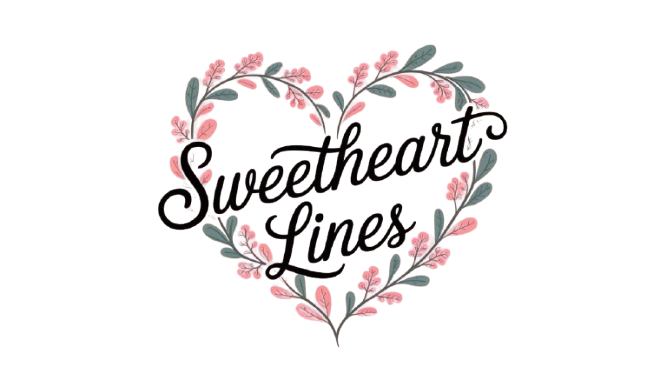Ever stared at the NYT Connections grid and thought, “These words make zero sense together”? You’re not alone. By 2025, this daily puzzle has become a cultural ritual—part brain workout, part obsession, and occasionally, a full-on battle of wits.
That’s where Mashable’s Connections hints swoop in like a lifeline. They don’t spoil the answers but offer clever nudges that make you see patterns you missed. Imagine having a puzzle coach whisper, “Look again, but smarter this time.”
In a world of instant answers, Mashable keeps the magic alive by helping you solve with confidence, not shortcuts. Whether you’re sipping coffee at your desk or sneaking a round on your phone, these hints transform frustration into those glorious “aha!” moments.
What is NYT Connections and Why Players Love It
The New York Times Connections puzzle, created by Wyna Liu, asks players to group 16 words into four categories. Each group shares a hidden theme—like sports teams, cooking terms, or things that fly.
Here’s what players face daily:
| Feature | Description |
| Grid Size | 16 words |
| Goal | Find 4 groups of related words |
| Colors | Yellow (easy), Green (medium), Blue (hard), Purple (tricky) |
| Challenge Level | Ranges from simple to deceptively difficult |
| Risk | Too many wrong guesses = game over |
Why fans love it: it blends logic, vocabulary, and lateral thinking in ways that tickle both the brain and the funny bone.
The Daily Ritual: Why People Check Mashable’s Connections Hint Every Morning
For many, Connections is like a crossword or Wordle—it’s a morning ritual. But unlike crossword answers, players don’t want the solution handed over. They need guidance, not spoilers.
Mashable provides that middle ground: enough to avoid tunnel vision, but not enough to rob you of that aha! moment.
Think of it as a trainer at the gym. They don’t lift the weights for you but spot your form and encourage smart moves.
Understanding the Format and Rules of Connections

Connections looks simple but hides depth. Here’s the breakdown:
| Rule/Format | Explanation |
| Words per Puzzle | Always 16 |
| Groups | Always 4 |
| Attempts Allowed | 4 mistakes before failing |
| Themes | Can be cultural, linguistic, or abstract |
| Colors | Yellow (easy), Green (medium), Blue (hard), Purple (tricky) |
Tip: Don’t overthink. Many players lose by searching for too clever connections when the answer is sitting in plain sight.
The Role of Hints in Avoiding Frustration and Improving Accuracy
Hints prevent frustration and keep players motivated. Without them, it’s easy to spiral into:
- Overconfidence → making fast, wrong guesses
- Tunnel vision → focusing on one wrong group
- Burnout → giving up when categories feel vague
Mashable’s hints build confidence by highlighting patterns you may have missed while leaving room for discovery.
Mashable’s Unique Approach to Giving Hints Without Spoiling
Unlike some providers that flat-out list answers, Mashable focuses on:
- Subtle nudges instead of direct solutions
- Category cues without naming them outright
- Playful puns to spark lateral thinking
This keeps the puzzle’s integrity intact while still supporting solvers of all skill levels.
Structure of Mashable’s Hints: Categories, Clues, and Purpose
A typical hint structure looks like this:
| Element | Example | Purpose |
| Category Clue | “These all move with wings” | Nudges toward “things that fly” |
| Difficulty Labels | Easy, Medium, Hard, Tricky | Sets expectations |
| Wordplay | Puns or cultural jokes | Encourages creativity |
| Non-Spoiler Style | Avoids naming the 4 exact words | Preserves challenge |
Real Examples in Action: How Gentle Nudges Work Better Than Answers
Instead of saying “The group is sports teams”, Mashable might hint:
“You might see these names on jerseys or stadium banners.”
This pushes solvers to think about teams without spoiling the fun.
Yellow Example: Everyday Things That Fit a Category
Yellow categories are the “warm-up sets.” Example:
| Clue | Words |
| Things worn on feet | Shoe, Boot, Sneaker, Sandal |
These give players an early win, building momentum.
Purple Example: Abstract and Tricky Groupings Explained
Purple is where most players get stuck. Example:
| Clue | Words |
| Verbal slip-ups and missteps | Slip, Stumble, Stutter, Trip |
These require abstract thinking and careful observation.
Mixed Case Example: Balancing Obvious and Subtle Connections
Sometimes categories blend easy and tricky words. Example:
| Clue | Words |
| Flavors | Lemon, Chocolate, Cinnamon, Mint |
This keeps solvers engaged by mixing intuition with deeper analysis.
Advanced Techniques: How to Sharpen Your Puzzle-Solving Skills
To master Connections, apply these strategies:
- Eliminate obvious outliers first
- Look for repeated word types (foods, colors, tools)
- Avoid locking into one theory too early
- Step away and revisit with fresh eyes
Eliminating Outliers and Preventing Misleading Groupings
Outliers—words that don’t fit—are red herrings. For example:
| Trap | Actual Group |
| Mixing “Rose” with flowers | It’s actually a sports team |
| Pairing “Drum” with music | It belongs in onomatopoeia |
Spotting outliers sharpen pattern recognition and prevent costly mistakes.
Cognitive Benefits of Playing Connections Daily
Science backs puzzle play. Studies from the University of Exeter and University of Michigan show:
| Benefit | Effect |
| Memory Recall | Faster word association |
| Cognitive Flexibility | Switching between ideas |
| Stress Relief | Entering “flow state” |
| Confidence | Achieving daily wins |
Think of it as a workout for your brain’s neural pathways.
Community Resources: Where Puzzle Lovers Share Insights
Connections isn’t just a solo challenge—it’s a community sport. Fans gather on:
- Reddit threads
- Twitter/X chats
- Dedicated Discords
- Mashable’s comment sections
These spaces encourage collaboration, debates, and shared wins.
Engaging with Fellow Players Online: Threads, Subreddits, and Social Media
Want real-time strategy tips? Try:
| Platform | Benefit |
| Collaborative hint-sharing | |
| Twitter/X | Quick updates & reactions |
| Threads | Casual conversations |
| Livestreams | Watching experts solve live |
Additional Resources: Video Guides, Blogs, and Tutorials
Many solvers double their skills by using extra resources:
- YouTube tutorials for visual explanations
- Puzzle blogs with strategy breakdowns
- Fan-made apps for practice grids
- Newsletters delivering daily insights
Comparative Analysis: Mashable vs Other Hint Providers
Not all hints are equal. Let’s compare:
| Provider | Approach | Strength |
| Mashable | Gentle nudges | Preserves challenge |
| Crowd-sourced | Fast & diverse | |
| Puzzle Blogs | Detailed write-ups | Organized formats |
| Creators (YouTube) | Step-by-step | Visual & entertaining |
Key Takeaways from Different Hint Styles and Sources
- Mashable = non-spoiler integrity
- Reddit = community-driven
- Blogs = structured guides
- YouTube = visual learning
Mixing sources enhances fun, fairness, and creativity.
Tips from Puzzle Masters: How Experts Approach Connections
Puzzle champions recommend:
- Don’t lock in answers too quickly
- Look for visual or phonetic similarities
- Recognize common traps (teams, colors, homophones)
- Practice outside the puzzle to sharpen vocabulary
Building Your Personal Strategy for Long-Term Success
Want consistency? Try this roadmap:
| Step | Action |
| Start Easy | Identify yellow groups first |
| Spot Patterns | Colors, foods, teams |
| Test Matches | Tentative groupings |
| Keep Notes | Track tricky categories |
| Adjust | Learn from mistakes |
Troubleshooting Common Challenges and Avoiding Pitfalls
Players often struggle with:
| Issue | Fix |
| Overthinking | Keep it simple |
| Misinterpreting clues | Re-check categories |
| Rushing | Slow down |
| Ignoring repetition | Look for word echoes |
Staying Motivated: Turning Frustration into Consistency
Connections can feel brutal some days. Stay engaged by:
- Celebrating small wins
- Tracking streaks
- Competing with friends
- Changing environments to refresh focus
The Psychology Behind Why Hints Work Without Giving Answers
Hints boost performance by:
- Reducing cognitive overload
- Preventing confirmation bias
- Encouraging creative leaps
- Building confidence and motivation
Real-World Benefits of Puzzle-Solving: Brain, Confidence, and Focus
Connections isn’t just fun—it trains real-world skills:
| Benefit | Example |
| Vocabulary Growth | Spotting cultural references |
| Pattern Recognition | Sharper problem-solving at work |
| Confidence | Daily “wins” spill into real life |
| Stress Relief | Flow state improves well-being |
FAQs
What time does the NYT Connections puzzle release?
Every day at mid-morning EST, new puzzles go live.
Does Mashable spoil Connections answers?
No. Mashable offers non-spoiler hints that guide without revealing.
Why are purple categories so hard?
They’re designed for abstract thinking—like wordplay, idioms, or tricky themes.
Can beginners rely on Mashable hints?
Yes. They’re perfect for boosting confidence without ruining the challenge.
Is playing Connections daily good for the brain?
Absolutely. It enhances memory, focus, and logical reasoning—like a mental gym.
Conclusion
By 2025, Connections has become more than a puzzle—it’s a cultural habit. Mashable’s hints strike the balance between fun and fairness, guiding solvers without stealing the joy of discovery. Whether you’re a beginner seeking simple nudges or a seasoned pro chasing streaks, the right hint at the right time can make all the difference.
Connections isn’t just about grouping words—it’s about connecting ideas, sharpening your mind, and enjoying the daily dance of logic and language.












